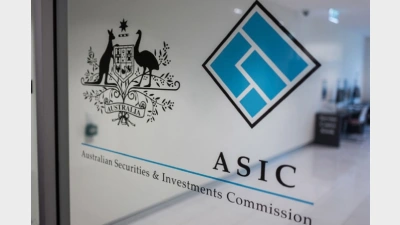(June-2004) A sea change for hedge funds
A sea-change has occurred in the Australian financial services sector over the past three years — two of the so-called “alternative investments”, hedge funds and private equity, are becoming increasingly mainstream.
Perhaps the best measure of the broad acceptance of hedge funds and private
equity within superannuation fund asset allocations is that 18 months ago, consultants and trustees were thinking in terms of a maximum of 3 per cent being directed towards alternative investments while today they are talking “3 to 5” and, not unusually, “5 to 10”.
But the catalyst for this change was
undoubtedly the two years of adverse
superannuation returns up until late 2003. It was those negative returns which prompted trustees and their asset consultants to look beyond their traditional equities/property allocations towards alternative such as hedge funds.
But even now there is hesitancy.
Frontier Investments managing director, Fiona Trafford-Walker says there is no question that alternative investments and hedge funds in particular received a boost from the two years of adverse returns.
“When equities are good they are very, very good but when they turn down it can be really testing and a lot of people vowed they would not get caught that way again,” she says.
Trafford-Walker says this gave rise to increasing interest in hedge funds and, to a lesser extent, private equity.
From Frontier’s point of view, she says the general recommendation to clients is that alternative investments represent a useful part of a well-diversified portfolio.
“While some people may have regarded them as the answer to their prayers, we simply see them as a part of an appropriately diversified portfolio,” she says.
Towers Perrin’s director, asset consulting services, Paul Laband, is a little more bullish than Trafford-Walker and says Towers Perrin is positive about clients having an appropriate allocation towards hedge funds and private equity.
What is more, he says the rationale behind such advice isn’t based on clients having experienced a lean market but on the nature of structural change which has taken place.
Laband believes that the increasing interest in hedge funds over the past two years, particularly fund-of-funds vehicles, hedge funds can increasingly be regarded as acting as an asset class in their own right.
He says that one of the benefits of fund-of-funds arrangements is that they call for more skill-based management.
Asked what he believes is an appropriate allocation towards alternative investments, Laband says 5 to 10 per cent would be appropriate for hedge funds, while 5 to 10 per cent and possibly higher would be appropriate for private equity.
Laband believes that notwithstanding the broader acceptance of alternative investments, trustees are still inclined to move cautiously and that such caution is justified.
“We are not saying that alternative investments represent a panacea,” he says. “These investments are heavily reliant on manager skills and bring with them their own risks.”
Looking at things from the other side of the fence, Hedge Funds of Australia Asset Management chief executive Spencer Young says he’s noted increasing acceptance of hedge funds both by institutional and retail investors, particularly fund-of-funds arrangements.
He says there’s been far more caution where single-manager strategy funds are concerned, but Australian-domiciled single manager products are proving to be the exception to the rule.
“It comes back to the appetite of the investor, but what we think we’re seeing is an approach by investors which reflects where they are in terms of the work/retirement time-line,” Young says.
He says, for instance, that those with longer to run in the workforce tend to adopt more aggressive strategies.
Young believes the so-called “traditional” 3 per cent allocation towards hedge funds is “laughable” and argues that some asset consultants have been “behind the curve” when making recommendations.
“Asset consultants spend only 5 or 10 per cent of their time looking at alternative investments while we spend 100 per cent of our time,” he says.
“On that basis we would argue that anything from 20 per cent up would be appropriate.”
Trafford-Walker believes there remains a general lack of understanding of hedge funds but argues they do not of themselves represent a substitute for equities.
“They add value and they reduce risk, but we would say an allocation of between 3 and 5 per cent is appropriate,” she says.
Trafford-Walker says timing is everything when it comes to alternative investments and while private equity has delivered better than average returns over the past 12 months, this has been largely attributable to the number of initial public offerings.
“Alternative investments certainly add cream, but you need to be careful that you don’t get in too late and that the cream is turning sour,” she says.
Recommended for you
The structural shift towards active ETFs will reshape the asset management industry, according to McKinsey, and financial advisers will be a key group for managers to focus their distribution.
ASIC has warned that practices across the $200 billion private credit market are inconsistent and, in some cases, require serious improvement.
A surge in electricity prices has driven the monthly Consumer Price Index to its highest level in a year, exceeding forecasts.
Infrastructure well-positioned to hedge against global uncertainty, says investment chief.







